3d drawing program posing program model
3d models can be used for good or evil. Yes, they tin can exist a crutch that keeps you lot from learning basic skills, but they tin can also be a powerful tool to take your art to a higher place and beyond what would be traditionally possible. Concept artists have been using them for ages as an integral part of their workflow, but they're notwithstanding underutilized in other genres. But that can be changed.
First, a crude guide to some of the tools at your disposal:
Gratis
- Sketchup is by and large an architectural visualization program, with all other uses coming later. Simply it's simply about every bit simple as 3d programs get (although I recommend you spotter the tutorials, because the controls are unintuitive if you go in bullheaded) and perfect for making bases that you lot tin can depict or pigment over.
- Blender, on the other hand, is capable of anything the big boys are, but the learning bend is infamously steep.

- Daz Studio is gratuitous (with microtransactions for actress models and backgrounds) and best for graphic symbol posing and scene mockups.
- Unreal Engine can be used to brand excellent backgrounds, simply since information technology's intended for games, there's a learning curve involving a lot of things you might experience distract from your fine art itself.
- Sculptris is the premier free 3d sculpting program. It's no longer updated—offered as a legacy download with no support—merely the price is correct.
Paid:
- ZBrush is the reigning male monarch of 3d sculpting. Definitely the most common tool you'll see integrated into digital painters' workflows for things like graphic symbol art.
- 3dCoat is a far cheaper, up-and-coming alternative that'due south making a lot of waves in the product industries. Side note: sculpting programs work best with tablets, so if you lot're in the market for i, nosotros make those…
- Maya and 3DSMax are the industry standards for dedicated graphic symbol and object modeling. They're very expensive, and if you're strictly a 2d artist, y'all almost definitely won't be using these, but any decent list has to include them.
- Modo is a simpler, faster, and cheaper version of the higher up.
- Poser is like Daz, but paid, and with less user-created content. It makes up for information technology past being more than intuitive and arguably more flexible, however.
Preparing a 3d Model
We can't encompass the actual process of obtaining one of these programs and learning to use it, and so let'south skip alee a bit. You lot're at the point where you have a overnice, finished model ready to become. What's the best way to return it for use in a painting?
The specific settings for what light and color settings to utilize vary wildly from program to programme….
Sidenote: Render Engines
If you're new to 3d, these are the programs that turn your prototype from a blocky shape in a program to a pretty finished picture, assuasive y'all to set lighting weather and the details of how yous desire your exported image to await. They can be bought in packs with 3d software, or as standalone programs that y'all load your model files into. The near popular i is VRay, simply at that place are some freeware options available similar LuxRender and Kerkythea.
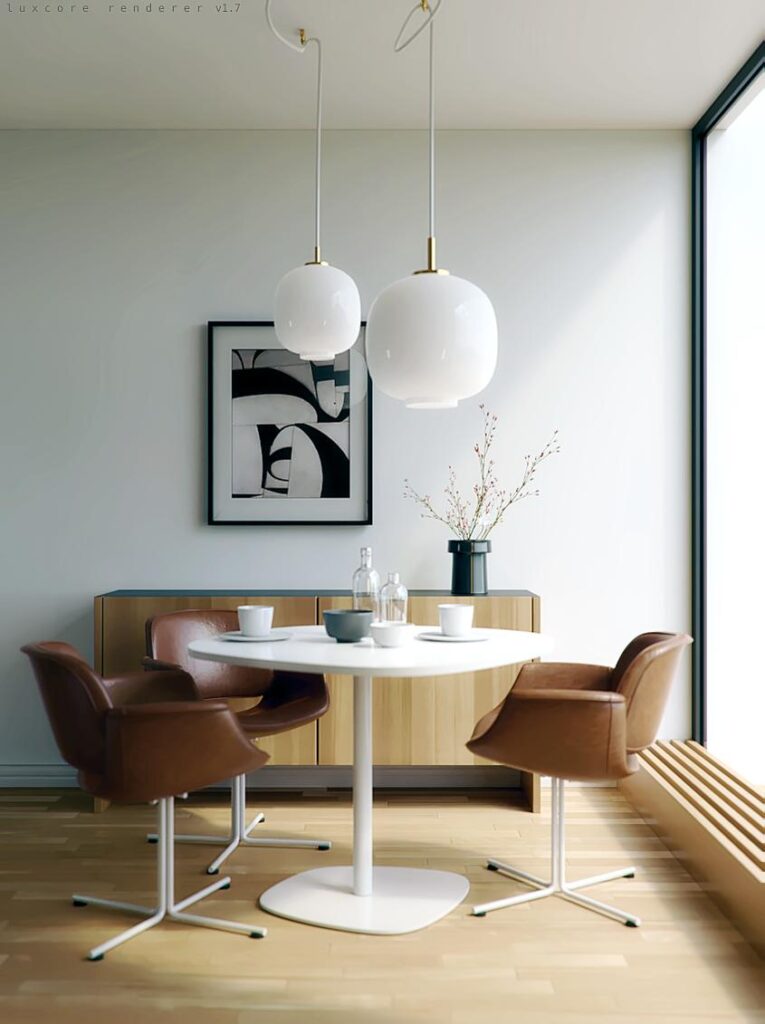
Of particular note to digital artists, are non-photorealistic, or "toon," shaders. These are sub-programs inside most rendering engines that render your image in a "cel" style with hard edges and more bright colors. These come bundled with some programs like 2019's Z-Castor, or they tin can exist purchased separately, oft as a setting or plugin for a standalone render engine. Freestyle is a freeware program packaged with Blender that renders clean lineart, which might prove invaluable for things like comic art.
El jardín de senderos que se bifurcan – Trailer 01 from Juan Camardella on Vimeo.
…Only overdoing information technology might be counterproductive. When yous programme to paint over them, 3d models are best used to model shapes and shadows, with decisions nearly the specifics of stylization, lighting, and coloring made during the painting phase where they're easy to change.
It's tempting to apply a photorealistic rendering of your 3d model on the groundwork of a beautiful dusk as your base, but that's a hindrance if yous make up one's mind you lot want to change the lighting or color palette once you've added the characters and other elements of your painting. Especially when you're new to integrating 3d and second art, you want to start elementary so yous can make well-nigh of your creative decisions during the painting process: An image that only gives you lot the object's shape and lighting might exist best.
Bashing
"Photobashing" is the term for cutting and pasting photos into digital compositions: you could call it a subcategory of photograph-manipulation. Ordinarily, 3d integration follows the verbal aforementioned process: taking a loftier-resolution image of your model, and matching it to your scene'south perspective. Afterward that, you'll demand to brand tiny adjustments to the size, adjust the coloring to match your scene's light, airbrush some shadows over it, and clone postage some things hither or in that location. This is called "postworking."
Y'all can theoretically practice this with any image editing programme, merely Photoshop has the almost tools to facilitate it.
Sidenote: Photoshop Integration
The latest couple iterations of Photoshop CC, as well as Clip Studio Paint, will let y'all import several 3d file types straight into the program, rotate and resize the model on your canvas, and pose it if it'southward a rigged grapheme.
Photoshop 3d compositing tutorial by Howard Pinsky
This is substantially the same as rendering a transparent PNG of the object and pasting it in, just it simplifies a crucial and potentially annoying step.
Photoshop is also often used equally a method of post-production for purely 3d artists, using it to add textures and backgrounds to renders of their models.
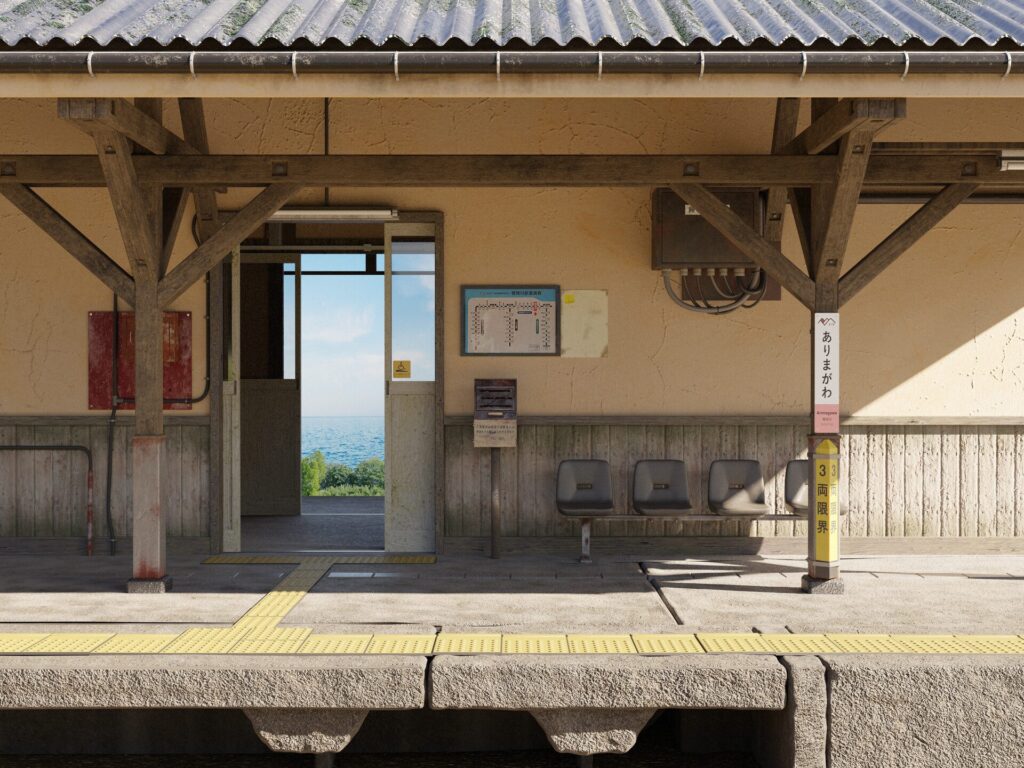
Overpainting
Tracing entirely over your 3d model so the result matches your cartoon/painting seamlessly: Another standard do in concept art.
Compilation of anime-style overpaints past Mclelun Lee
One of the biggest advantages of overpainting is that you can make unlimited changes to the model, adding details, textures, and things like wear and tear, that yous might not have the 3d skills to pull off in the modeling stage.
Tip: If you're designing backgrounds or buildings in 3d, and the program y'all're using lets you create 2nd grids over your images. It makes drawing your own additions 10 times easier.
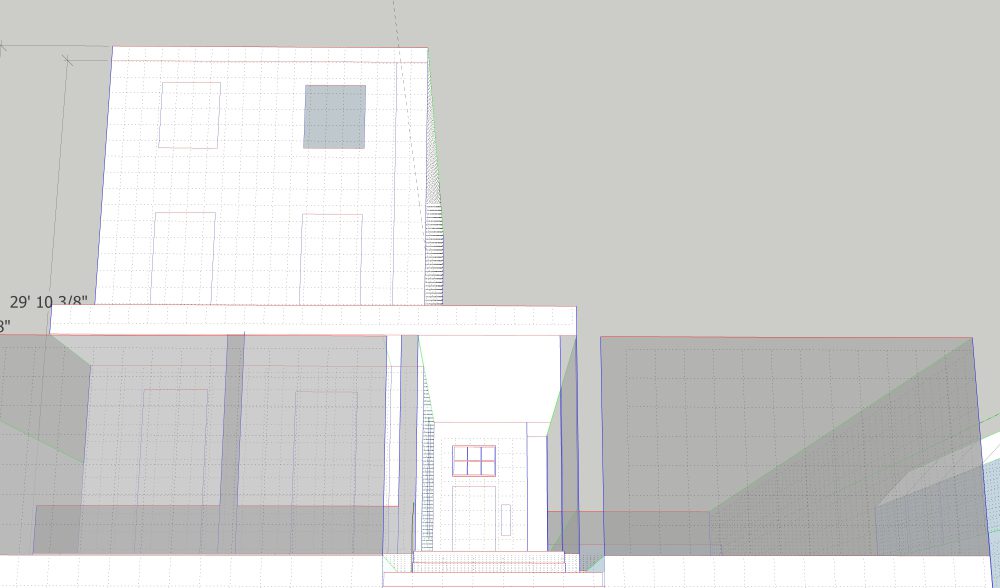
There's also an abandonware* program chosen Carapace that lets you draw vanishing indicate grids over the exported images of your 3d models. It'southward invaluable for establishing the perspective for a drawing.
*Pulled off its original site, but nevertheless made available by fans.
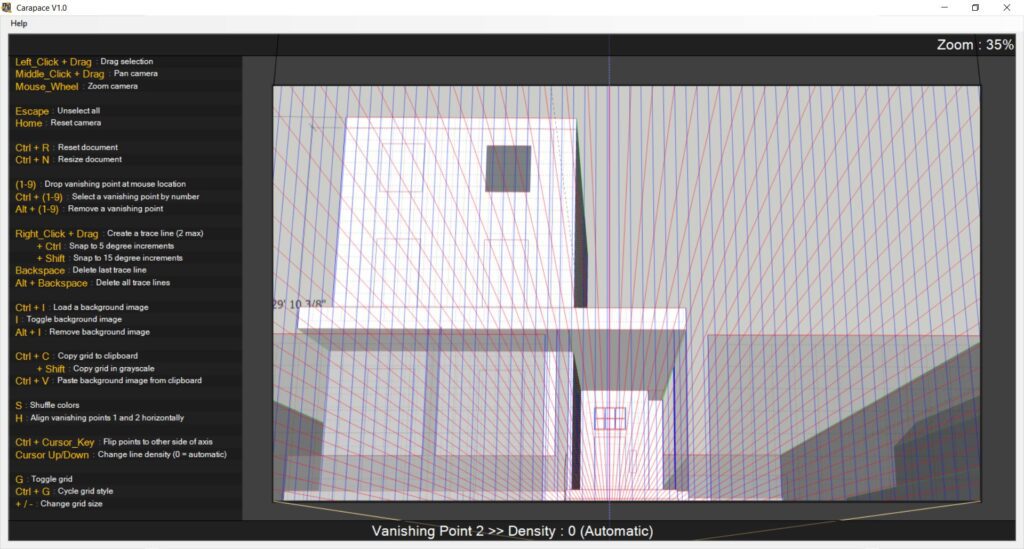
Character Models
This might exist just my opinion, homo, just when it comes to static digital art (animation'southward a different ball game, where it's often used past necessity) it's best to use 3d models of the human figure every bit reference: it's inadvisable to trace them unless you've sculpted them yourself with a strong knowledge of the human figure. Every bit simulations of moving bodies, 3d model poses and faces are normally potent, and you don't want your cartoon to inherit that stiffness—or any of the problems that come from cheap 3d programs that don't simulate fabric creases or mankind squishiness.
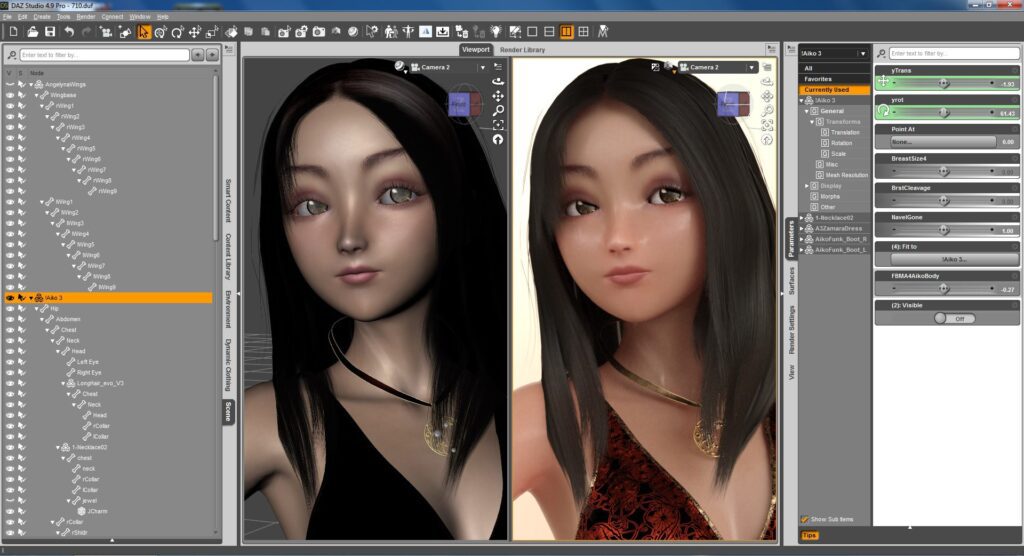
When it comes to using 3d to plan out complex poses and angles, I'grand partial to a freemium program called DesignDoll. It'southward very piece of cake to employ, and its mannequins are unproblematic enough to allow yous create authentic poses in perspective without constraining you lot.
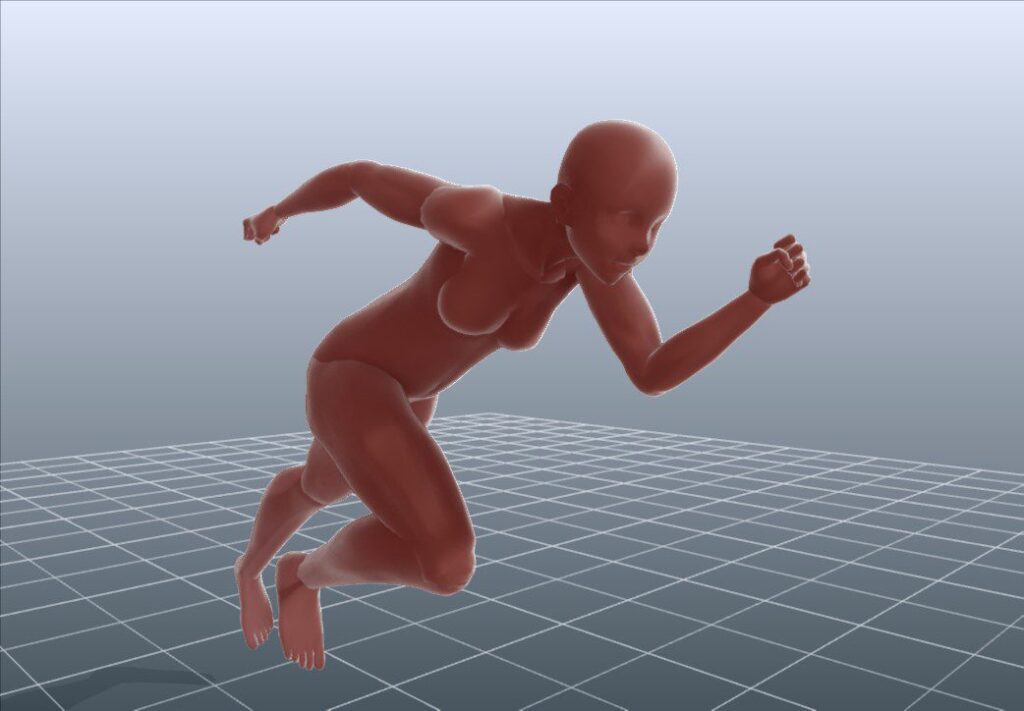
Web developer Herman Martinus has also created an excellent online culling called JustSketch that allows you lot to view a couple fully-rendered figures in fantasy dress in addition to the standard mannequins, which are themselves unusually well-proportioned even compared to some paid programs. …And which y'all nevertheless shouldn't trace.
Seriously, don't trace them.
Sketchup Models
Sketchup has somewhat of a "Baby's First 3d Plan" reputation in the manufacture, but this is unfair, as information technology's phenomenal for the creative person who simply needs an authentic base of operations for a piece. Its biggest force is that information technology deals far more in real dimensions than percentages and "units." This makes it excellent for making backgrounds that are easy to place characters into as well.
If your graphic symbol is an fifty-fifty 6 foot, for example, yous can place a half dozen' marker at the exact position where they'll exist standing, and so you can size them correctly.
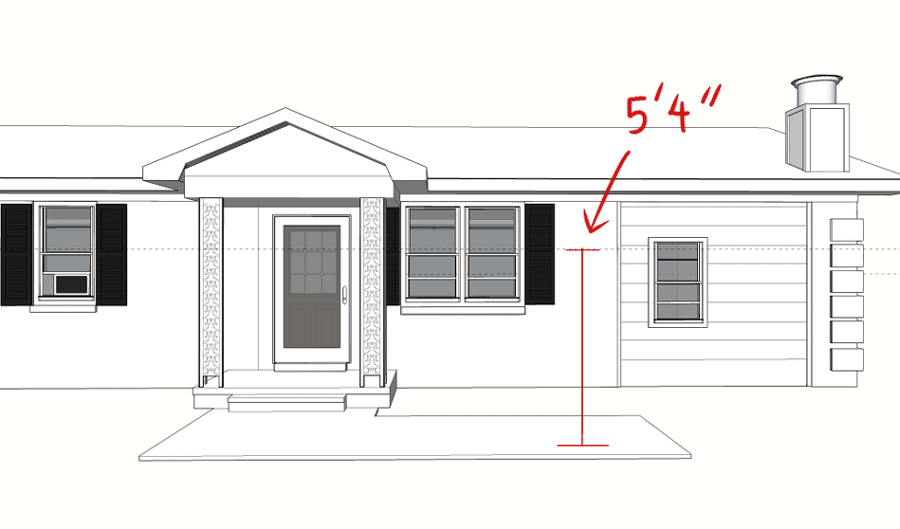
Granted, there are a few bug with it. For example, its default exporter produces models with difficult, jaggy lines and curves that aren't curves.
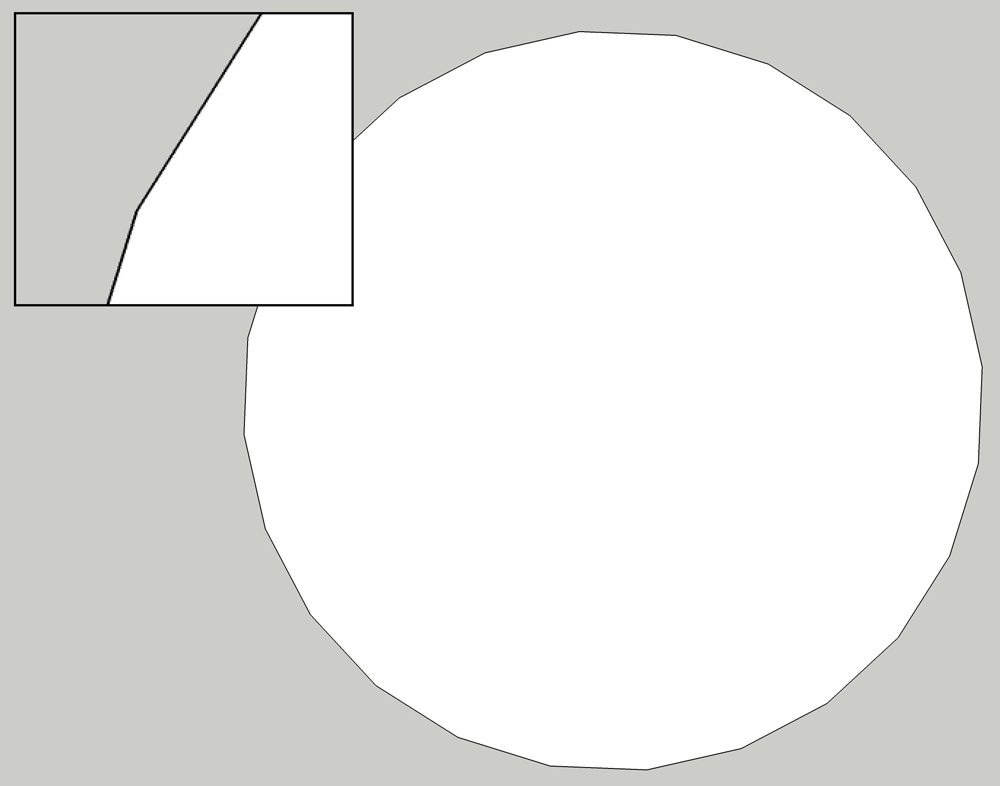
In that location are a ton of custom styles, many of which simulate various hand-drawn art styles, just I've however to discover a simple plugin that will consign clean lines that are suitable for directly inserting into lineart. I've found Sketchup models always require tracing or overpainting for practiced-looking results.
Prune Studio Pigment's vector tools are nifty for this.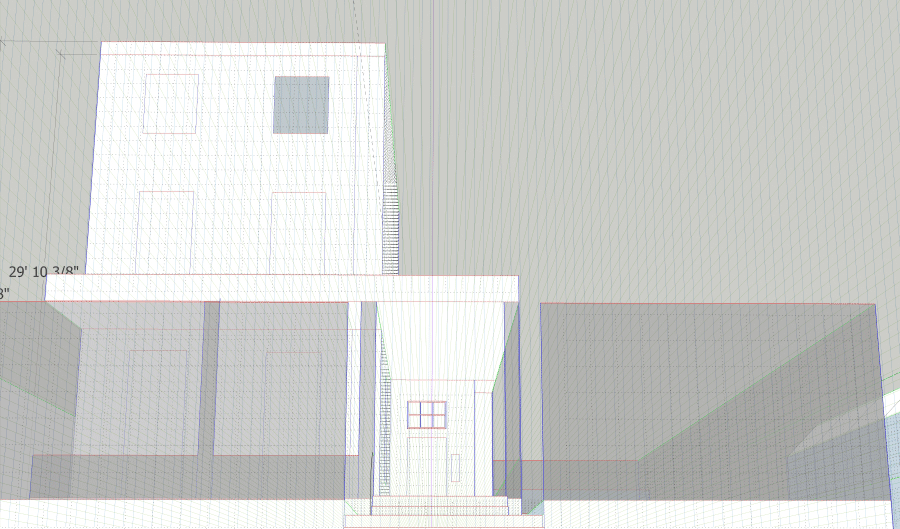
This is admittedly tedious as h*ck. However, information technology's withal one of the best and most accessible tools for creating quick architecture, and it comes with a massive "3D warehouse" full of premade buildings and vehicles.
In Conclusion…
No matter how you do information technology, 3d model integration always needs to be based on a foundation of existing art skill. It takes a firm grasp of the fundamentals to know how to friction match a model to your scene's perspective, modify or exaggerate the proportions in just the right means, and pigment light and color over information technology and then it doesn't stand up out. But once y'all have those, it'south the push over the cliff – the "up to 11," so to speak" – that can let you create far more realized worlds in less time.
…Or yous can just forget all that and slap a filter on it.
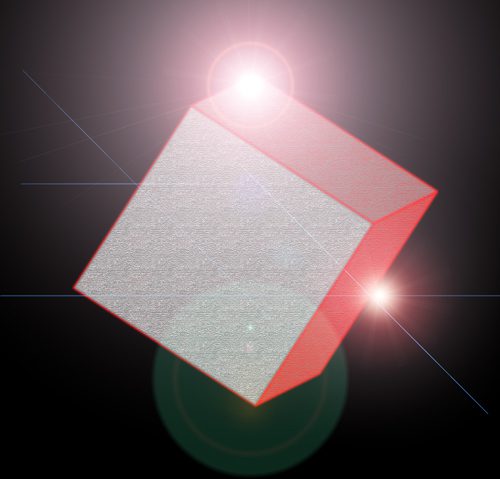
Art.
Bonus Resources
If you only need reference, Sketchfab lets you view models in full 360 at unlike zoom levels. I've found it invaluable for drawing faces from strange angles.
Turbosquid doesn't accept full 3d, just makes up for information technology with a fantastic selection of models with screenshots from every angle, including plenty of complimentary ones..
Pixelsquid , its sister squid, has a free tier that allows you lot to scan through a library of 3d models with transparent backgrounds and download PNG's from your called bending that you tin can use for overpainting. Yous have to pay to remove watermarks and unlock shadows, but once you take the model and a defined low-cal source, it'southward adequately simple to pigment around those limitations.
If you're looking for a specific car model, you could exercise much worse than DMI-3d.
About the Writer: CS Jones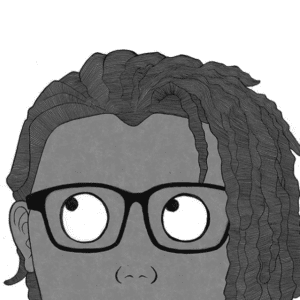
CS Jones is a Philadelphia-based freelance writer, illustrator, and occasional photographer. He spends his spare time listening to Spotify and waiting for trains. Someday, he'll terminate that graphic novel. In the meantime, his work is best seen at thecsjones.com or @thecsjones on Instagram.
Website
Source: https://community.wacom.com/us/3d-tools-for-artists-a-basic-primer/
0 Response to "3d drawing program posing program model"
Post a Comment